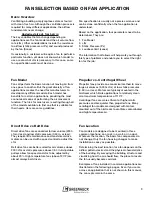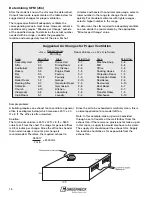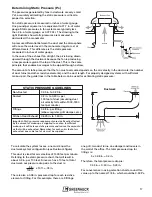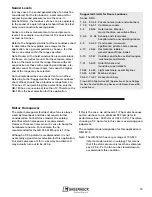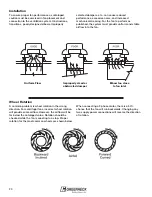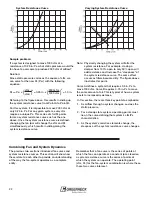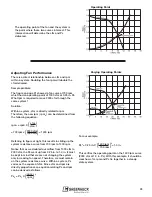
Adjusting Fan Performance
There is a direct relationship between cfm and rpm
within a system. Doubling the fan rpm will double the
cfm delivered.
Sample problem:
The figure on page 21 showed a fan curve at 700 rpm
which had an operating point of 1000 cfm at 0.25 in. Ps.
What rpm is required to move 2000 cfm through the
same system?
Solution:
Within a system, cfm is directly related to rpm.
Therefore, the new rpm ( r p m
2
) can be determined from
the following equation:
rpm
2
= rpm
1
X
(
cfm
2
)
cfm
1
= 700 rpm x
(
2000 cfm
)
= 1400 rpm
1000 cfm
Referring to figure at right, this results in sliding up the
system resistance curve from 700 rpm to 1400 rpm.
Notice that as we doubled our airflow from 1000 cfm to
2000 cfm, the Ps went up from 0.25 in. to 1.0 in. It must
be kept in mind that we are not changing the system,
only increasing fan speed. Therefore, we must remain
on the system resistance curve. Within a system, Ps
varies as the square of cfm. Since cfm and rpm are
directly proportional, an equation relating Ps and rpm
can be derived as follows:
Ps
2
= Ps
1
X
(
rpm
2
)
2
rpm
1
For our example,
Ps
2
= 0.25 in. X
(
1400 rpm
)
2
= 1.0 in.
700 rpm
This verifies the operating point on the 1400 rpm curve
(2000 cfm at 1.0 in. Ps). With this example, it should be
clear how cfm, rpm and Ps tie together in a steady-
state system.
The operating point of the fan and the system is
the point where these two curves intersect. This
intersection will determine the cfm and Ps
delivered.
23
Operating Point
Varying Operating Points

